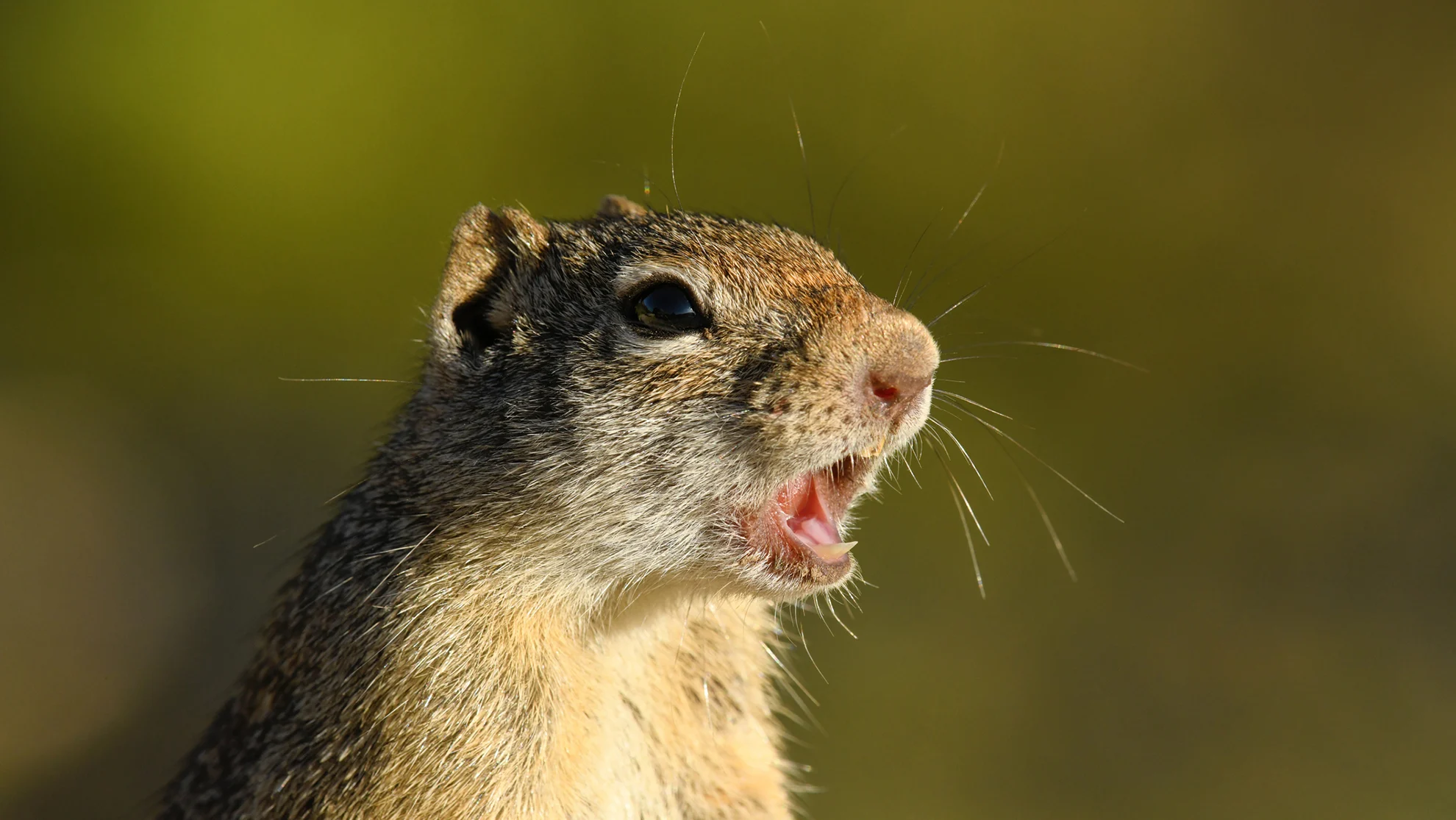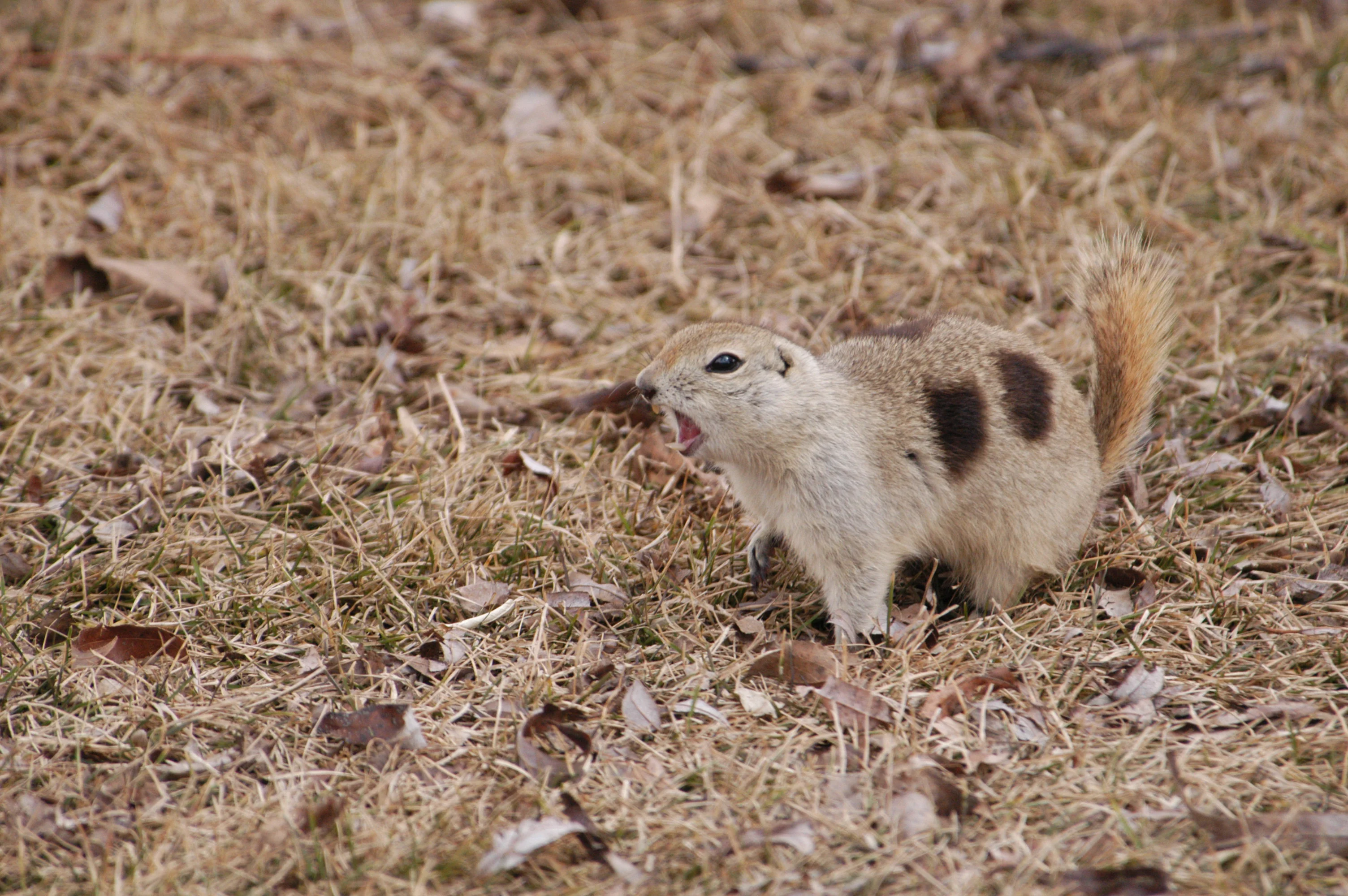
Climate change is cramping these squirrels’ love life
The heat is messing with the reproductive timing of Richardson's ground squirrels in a fascinating example of phenological mismatch driven by climate change.
Animals, like humans, are suffering from the impacts of climate change. Some impacts are direct and easy to understand, like loss of habitat or the disappearance of food sources. But the climate can also have more complex and bizarre consequences.
Take Richardson’s ground squirrels, commonly called gophers, a common pest in the Prairies. Dr. Jane Waterman, a biologist at the University of Manitoba and expert on social behaviour in ground-dwelling squirrels, has been studying a wild population for years at the Assiniboine Park and Zoo. In 2012, after a freak heat wave hit Manitoba in the spring, she noticed something strange with her squirrels — they were shooting blanks.
“So I was trying to look at the factors that may influence reproductive success.... In 2010, when I looked at them, everything was really clear. All the piping, all the instruments inside the animal were well developed. But when I looked in 2012, there was no sperm in so many of the animals."
And I just wasn't expecting it, so then we started to look at the factors that might have influenced this. There was no difference in age, body size or testes size. But it was 26 C out.”
Hot squirrel spring
The heat, it turns out, was the key factor. She explained that male and female squirrels rely on different cues to come out of hibernation. Males come out first, driven by endogenous cues — internal mechanisms like hormonal shifts that wake them up, “like an inner alarm clock.” They spend a few weeks bulking up and sorting out territorial issues with their peers, during which the reproductive system that was dormant in the winter kicks back into gear. This occurs in March, when there is still snow on the ground in Winnipeg.
Females, for their part, are guided more by environmental factors, what biologists call exogenous cues. They wake up more slowly as the temperature rises, and come out of their burrow ready to go. Normally, this occurs a few weeks after the males first become active, but in 2012 the delay between the sexes was reduced to just a few days. The girls caught the guys unprepared: over half (58.6 per cent) had non-motile sperm — so their swimmers didn’t swim.
“To tell if a male is really prepared for breeding, you can pick them up, you can look at their testes or their scrotum, it's big and dark grey. We didn't see any difference in the colours of ones that were shooting blanks and ones that had functional sperm. We didn't see any difference in the size; it was really cryptic,” explained Dr. Waterman.
The squirrels themselves did not seem to know the difference, either. They carried on their usual courting behaviours and, thankfully, it did not seem to impact the population, as females had average litters. However, Dr. Waterman suspects the freak incident had an impact on genetic diversity. You see, litters of squirrel babies usually come from different fathers. If over half of the potential dads are out of the picture, it influences the makeup of the whole population.

Richardson's ground squirrel in the Assiniboine Park Zoo, marked for the study. (Dr. Jane Waterman)
Changing climate disrupts natural connections
This unusual event is an example of phenological mismatch. Phenology refers to the study of the cyclical interactions between living things and their environment, like the timing of bird migration or flower blooms. These connections are often delicately timed and crucially important.
For example, the red knot, a species of shorebird, travels from Tierra del Fuego to the Arctic each year on a 30,000-kilometre journey that is timed specifically to hit the Delaware Bay in time to feed on the eggs of horseshoe crabs. The birds rely on different cues to make their journey than the crabs do to mate; changes in water temperature could lead the crabs to breed earlier, and the red knots to starve.
Or we can think of reptiles like turtles and crocodiles, where the sex of their babies is determined in part by the temperature of the eggs in the nest: a rise in the average temperature can have catastrophic consequences. Examples of phenological mismatches abound, and they will become more frequent as the climate becomes less predictable and extreme weather events multiply.
Cryptic changes
What’s even more concerning is that we may not notice it’s happening until it’s too late.
“So it's having all sorts of impacts on the organisms around us, and a lot of those impacts are hard to discern. They're hard to see. Clearly, in the Richardson's ground squirrels in Winnipeg, we wouldn't have picked up this change if we hadn't been doing the research. So they're not easy for us to pick up, but they're not subtle either when you actually look at them.”
Phenological mismatches usually disrupt the connections between two different organisms (predator and prey is the common example) or between a species and its environment. What makes the ground squirrels’ case particularly interesting — and concerning — is that the disruption is occurring between individuals of the same species.
And while farmers and park maintenance staff might celebrate the reduced fertility of these pesky burrowers, they play an important role in the prairie ecosystem and their loss could have rippling consequences.
“Ground squirrels, maybe you don't think that they're important, but we know that their burrows have big impacts on the animals around them. We also know that everything likes to eat them, so they're really important for a healthy ecosystem. And so we really should care about them. Even if they're not as big and sexy as a polar bear, they're still a really important organism in our environment.”
Thumbnail image: A Richardson's ground qquirrel in Yellowstone National Park. (mlharing/Getty)











